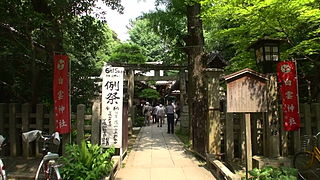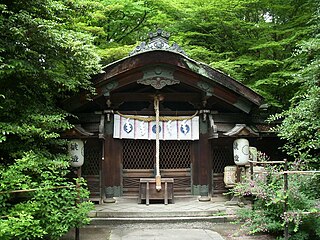Self-guided Sightseeing Tour #15 in Kyoto, Japan
Legend
Guided Free Walking Tours
Book free guided walking tours in Kyoto.
Guided Sightseeing Tours
Book guided sightseeing tours and activities in Kyoto.
Tour Facts
2.8 km
16 m
Experience Kyoto in Japan in a whole new way with our free self-guided sightseeing tour. This site not only offers you practical information and insider tips, but also a rich variety of activities and sights you shouldn't miss. Whether you love art and culture, want to explore historical sites or simply want to experience the vibrant atmosphere of a lively city - you'll find everything you need for your personal adventure here.
Activities in KyotoIndividual Sights in KyotoSight 1: Goou Shrine
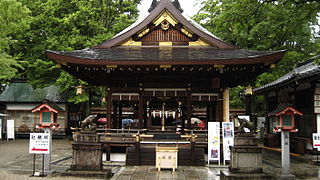
Goō Shrine is a Shinto shrine located in the Kamigyō-ku district of Kyoto, Japan.
Sight 2: Shirakumo Shrine
Shirakumo Shrine is a Shinto shrine in Kyoto Gyoen National Garden, in Kyoto, Japan.
Sight 3: Sento Imperial Palace
In Japan, the Sentō Imperial Palace traditionally does not refer to a single location, but to any residence of retired emperors. Before Akihito abdicated in 2019, the last Emperor to retire did so in 1817, so the designation commonly refers to the historical Kyoto Sento Imperial Palace (京都仙洞御所).
Sight 4: Kyoto Imperial Palace
The Kyōto Imperial Palace is the former palace of the Emperor of Japan, located in Kamigyō-ku, Kyoto, Japan. Since the Meiji Restoration in 1869, the Emperors have resided at the Tokyo Imperial Palace, while the preservation of the Kyoto Imperial Palace was ordered in 1877. Today, the grounds are open to the public, and the Imperial Household Agency hosts public tours of the buildings several times a day.
Sight 5: 梨木神社
Nashiki Shrine is a shrine located in Someden-cho, Kamigyo-ku, Kyoto. The former company status is a separate government company. The shrine is dedicated to the father and son of Mimi Sanjo, who contributed greatly to the Meiji Restoration. In addition, about 500 hagi plants are planted in the temple grounds, also known as Hagi no Miya, and the Hagi Festival is held in mid to late September.
Sight 6: 清浄華院
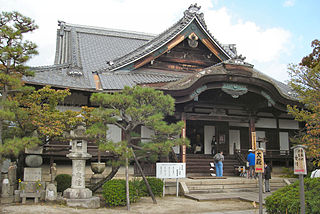
Shojo-in is a temple of the main temple of the Jodo sect located in Kamigyo-ku, Kyoto. The name is only the name of the temple, and there is no name of the mountain or temple. The honzon is a dharma superior. It is one of the seven main temples of the Jodo sect, and one of the four main temples of Kyoto of the same sect (the others are Chion-in, Hyakuban Chion-ji, and Kinsho Komyo-ji). According to the temple tradition, Ennin was founded in the Heian period at the request of Emperor Seiwa. Twenty-five Sacred Places No. 23. As of May 26, 2021 (Reiwa 3), the law owner is Mio Iida.
Sight 7: 廬山寺
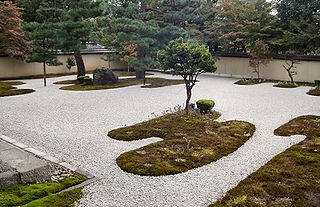
Rozan-ji is a Tendai Buddhist temple in Kamigyō-ku, Kyoto and the head temple (honzan) of the Enjo (圓浄) sect. The sangō of Rozan-ji is Mount Lu, or Lushan, pronounced rozan in Japanese. Currently located on the eastern side of the Kyoto Imperial Palace, it was founded by Ryōgen, the abbot of Enryaku-ji, in 938 in the Funaokayama neighborhood, south of Daitoku-ji. It was one of four temples that had an okurodo (御黒戸), a private Buddhist chapel for the Imperial Family, originally located in the Imperial Palace. These temples, the others being Nison-in, Hanjū-in, and Kengō-in, belong directly to the Imperial Household. The temple was protected from destruction by a nyōbō hosho, an official document recording the orders and words of the emperor written by the female court member, Madenokoji Fusako, during Oda Nobunaga assault on Kyoto temples, specifically the Tendai branch, and the siege of Mount Hiei. In 1573 it was moved to its present location on Teramachi Street as part of Toyotomi Hideyoshi's reorganization of Kyoto. The reconstruction was completed under the directive of Emperor Kōkaku.
Share
Disclaimer Please be aware of your surroundings and do not enter private property. We are not liable for any damages that occur during the tours.
GPX-Download For navigation apps and GPS devices you can download the tour as a GPX file.
